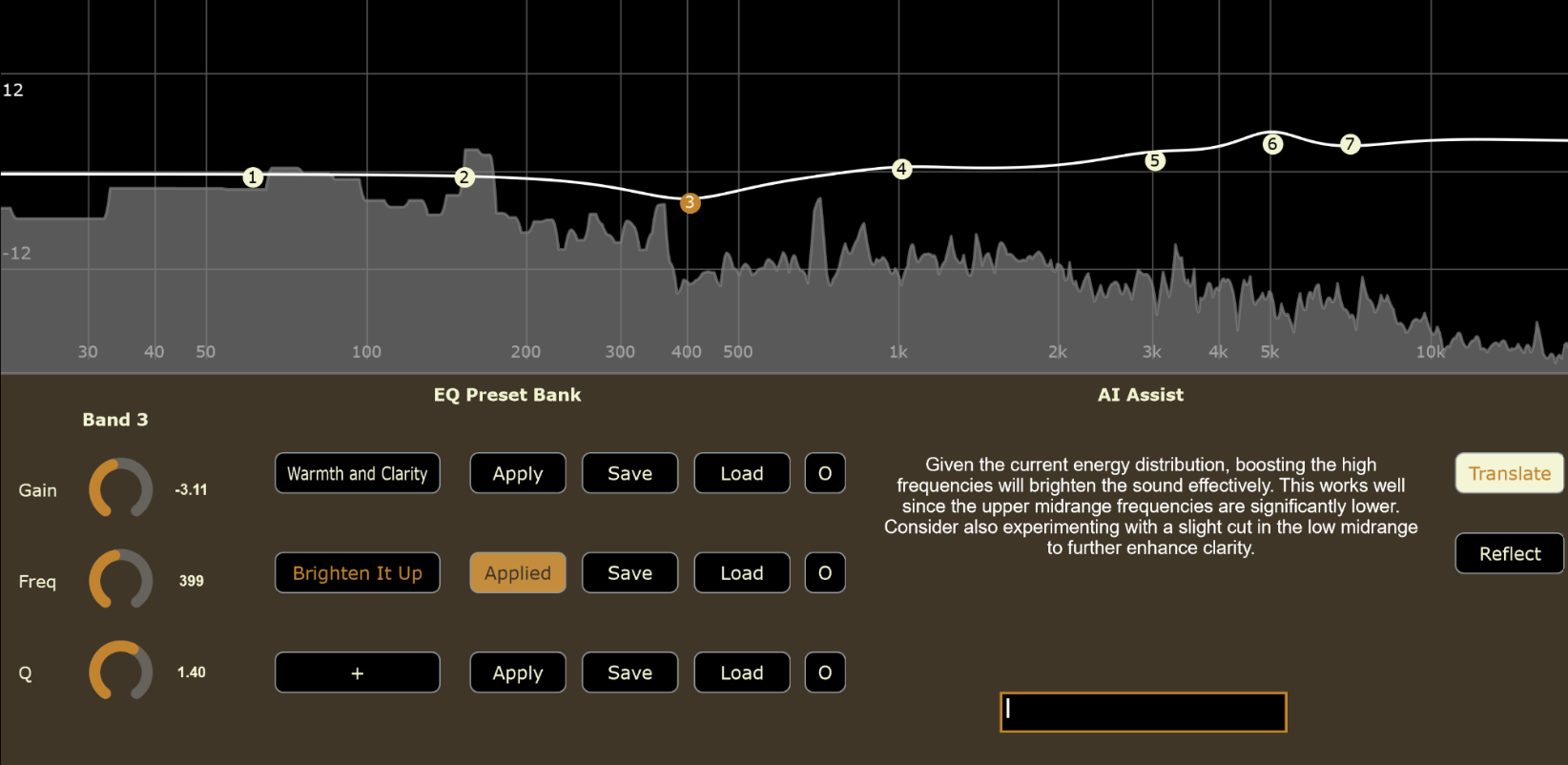Everett 1.0

macOS 11.0 or later (Intel & Apple Silicon supported)
Includes VST3 and AU plugin formats.
Works with Logic Pro, Ableton Live, FL Studio, Reaper, Cubase, and more.
Don’t know which one to download?
AU (Audio Unit) is Apple’s native plugin format. Use this if you’re working in Logic Pro, GarageBand, or Final Cut Pro.
VST3 is a widely supported format. Use this if you’re producing in Ableton Live, FL Studio, Reaper, Cubase, Studio One, and most other DAWs.
If you’re not sure, download VST3 — it’s supported by almost every DAW except Logic/GarageBand.
Using Everett 1.0 Effectively
This isn't just another EQ — it's an intelligent audio assistant. The better you communicate, the better the results.
Prompt Engineering Tips
- ✅ “Tame the harshness around 3–4 kHz in the vocals”
🚫 “Fix the harshness” - Use familiar audio terms like “muddy,” “boxy,” “airy,” “scooped,” “nasal,” or “bright”
- Include both the source and your intent: “Make the snare brighter and punchier without adding harshness”
- Describe the musical context: “Help this vocal cut through a dense trap mix”
- Specify problem areas when possible: “Reduce buildup around 200 Hz in the bass and kick”
- Be clear about creative direction: “Give the guitar a more vintage, mid-forward tone”
- Use contrast when helpful: “More airy like Billie Eilish vocals, less boxy like early demo takes”
What Everett 1.0 Is Great At
- Detecting and correcting tonal imbalances based on spectral energy
- Providing genre-aware EQ suggestions informed by reference data
- Making clear, explainable decisions based on measurable audio cues
- Translating natural language prompts into actionable EQ changes
- Adapting advice based on the characteristics of a specific audio source
- Suggesting corrective EQ that aligns with common production practices
What It’s Not Designed For (Yet)
- Interpreting subtle intent behind vague or metaphorical prompts
- Understanding creative goals without clear audio context
- Making nuanced decisions about dynamics or transient control
- Evaluating how a sound fits within a full mix without mix-aware input
- Handling edge cases like mic bleed, noise, or complex layered sources